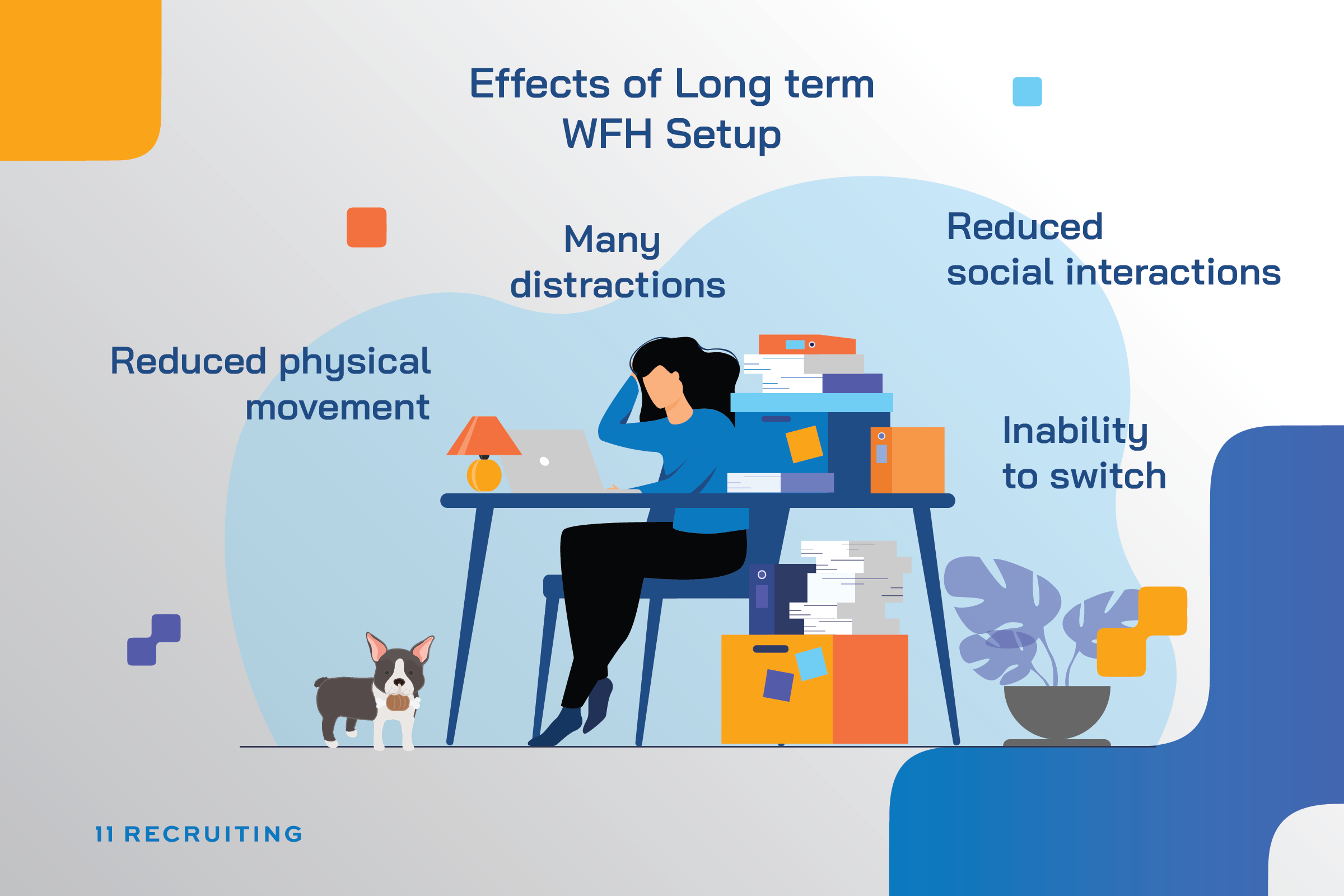
With the onset of the Covid-19 pandemic, businesses had to get creative to maintain operations and protect employees. Work from home (WFH) was the only viable solution as an alternative to the traditional office setup.
In this article, we’ll talk about how work from home is beneficial overall, while at the same time highlight the challenges faced by companies and individuals following the model.
The Rise in WFH Setup
The rate at which people got sick from Covid-19 saw many businesses close down as workers feared exposure. Even the companies that never thought of WFH setup as an option had to follow suit.
While only some businesses offered telecommuting as a perk prior to 2020, it has now become a norm for most companies. It is even estimated that by 2025, 70 percent of workers will be working from home for at least five days a month.
Some companies don’t offer telecommuting work, especially those who need on-site employees. These are businesses such as hotels, factories, and retails.
Impact on the Workforce
The shift from office setup to working virtually may have been sudden and unforeseen by many companies globally. That said, one thing is sure – companies have proven that virtual work is viable in the long run. But, how does this kind of work schedule affect the workforce? Here are some of the impacts WFH setup has on workers.
- Better work-life balance: When the work schedule permits an employee to allocate more time to finish personal duties, it gives them satisfaction. Consequently, when workers are satisfied, they become loyal to their employer.
- Cost-saving: A work-from-home setup is cost-saving for employees because they don’t have to incur costs on expensive office wear, lunches, snacks, transport, parking fees, car fuelling, and maintenance. Employers also save on overhead costs.
- Better performance: Let’s face it; office setups often have a lot of work-related politics and favoritism. All these factors can affect employee performance. When workers work remotely, they tend to focus more on what really matters – performance!
- A healthier and happier workforce: When the employees have a home office, they can create a more ergonomic workspace. A worker can also recover from an illness or surgery while still working from the comfort of their home. Working mums can look after their children with a WFH setup.
Workers with such benefits tend to be happier and healthier. Guess what this means for the company—- less absenteeism due to illness and motivated employees.
Frequently Asked Questions
What is the difference between telework and remote working?
The main difference between telework vs. remote work is that a remote worker works from anywhere and rarely reports to the office. A teleworker may not be working from the main office, but they may work from a shared office, home office, or branch office. Teleworkers report to the main office some days while remote workers don’t.
What are the tips for remaining productive while working from home?
Remaining productive while working at home requires that you understand your work schedule. You need to create a workable plan with your family so that they don’t distract you. It’s crucial to take breaks in between work just like in an office because all work and no play makes Jack dull. Lastly, avoid distractions from your phone, the television, and any potential factors that can break your focus at home; you can do this by having a dedicated working space.
Effects of Long Term WFH Setup
We already know that WFH setup is viable, and we’ve all seen positive impacts in the short term. But, how feasible is this model in the long run? While WFH is beneficial for employees and companies, it may also negatively impact them.

- Reduced physical movement: Workers in an office tend to move about the business premises. Whether it’s meetings in the boardroom located on the second floor, seeking clarification from a colleague in another office, or going for lunch outside the company, these activities contribute to physical health.
Working at home could promote a sedentary lifestyle. Employees may also be prone to overeating which could lead to health problems such as obesity, diabetes, and other life-threatening illnesses.
- Reduced social interactions: Humans are social beings. Individuals living alone may miss out on social interactions.
- Inability to switch: Some employees may also find switching from work to home duties challenging. This sudden shift of work style is particularly hard for someone who has been accustomed to working physically. Employees with a WFH setup may also tend to work more to prove to the management that they are not slacking off. Overworking leads to fatigue, stress, anxiety, and burnout.
- Many distractions: Remote work is often associated with distractions. Working from home with children is even more challenging because parents have to juggle work and the kids. It’s almost impossible for employees to focus on their office work.
The current shift from office setups to work from home might continue beyond Covid-19. However, it’s important to forecast the effects remote work could have on employees in the long run. By doing so, companies can mitigate any possible negative effects.
Did you find this article helpful? Here are other related articles in our blog section:
Thinking about making a switch from the traditional corporate 9-5 and work home instead? Visit us at our candidate services page to find out what you need to do.

